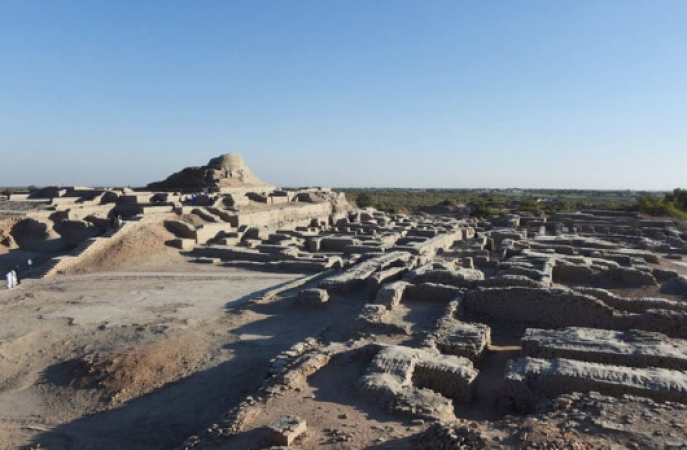
Paris: This summer's tragic floods in Pakistan nearly wiped out one of the first cities in human history. Despite its existence, Mohenjodaro has come to represent the threat that climate change presents to humanity's cultural heritage.
Mohenjodaro, which was built by the Indus Civilization in modern South Asia around 3,000 BCE, probably survived the flood because of the ingenuity of its architects.
The city was raised above the Indus River and had a rudimentary sewage and drainage system to drain most of the flood water.
Also Read: World economic conditions and long-term inflation
According to a network of researchers called World Weather Attribution, some 1,600 Pakistanis were killed in the floods and 33 million others were affected in a catastrophe that was "probably" made worse by global warming.
According to Lazare Eloundou Asamoah, director of the World Heritage Program at the United Nations agency UNESCO, the ancient metropolis "could have disappeared along with all the archaeological traces" that it contains.
Asmo claimed that the Pakistani site was a "victim" of climate change and that it was "very fortunate" to still exist exactly 100 years after its initial discovery in 1922.
Happily, "the situation is not dire" at Mohenjodaro, according to Thierry Joffroy, an expert on brick architecture who visited the site on behalf of UNESCO.
Despite some areas of ground sinking and water damaging some structures, the site "can be repaired" according to Joffro.
Paris-based UNESCO, which has been compiling a list of important places deemed worthy of protection for 50 years, is celebrating the anniversary in Greece this week.
We must combat the effects of climate change and biodiversity loss to protect this heritage. According to our assessment, this is the main threat, said UNESCO director Audrey Azoulay, who spoke at the conference in Delphi on Thursday.
Also Read: The global climate responsibility map is revised by COP27.
"One in five sites, and more than a third of natural sites, already see this threat as a reality," he said of the 1,154 World Heritage sites.
According to Rohit Jigyasu of the International Center for the Study of Conservation and Restoration of Cultural Property (ICCROM), floods, storms, cyclones and typhoons are becoming more frequent.
He said that climate-induced disasters are having a significant impact on places like Mohenjodaro.
Huge wildfires have scorched Canada's Rocky Mountains, a World Heritage Site, and this year, a heat wave increased the severity of wildfires in the Mediterranean Basin, with flames within 15 kilometers of Delphi Was
Meanwhile, this year a landslide occurred in Peru at the foot of Machu Picchu in the Andes mountains.
Other, less obvious changes can have even more serious consequences.
Also Read: Joe Biden's granddaughter marries, White House witnesses 19th marriage
Due to rising water temperatures, Australia's protected Great Barrier Reef is undergoing bleaching episodes.
Part of Fort Prinzenstein in Ghana, preserved as an important slave trading post, has been washed away by erosion.